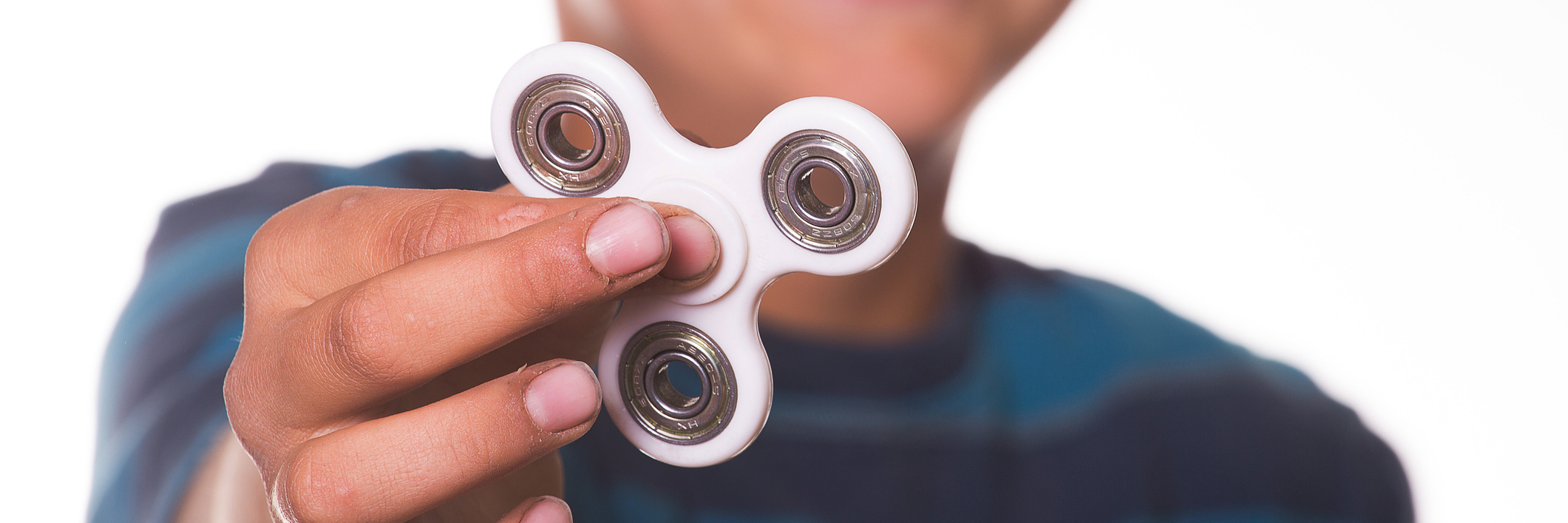Fidget spinners, Woolworths Marvel Hero discs, loom bands, Pokemon, YuGiOh, Magic cards, the list of fads in the primary school playground goes on. I have memories of similar trends which for my generation included elastics, yo-yos, and sticker collections. These trends were a big part of what my friends and I would share and talk about in my primary school years.
As an educator and Mum, I see the social aspects and social learning opportunities of primary school as one of the key purposes of attending school. Some children find social play relatively easy regardless of the environment and materials at hand. For other children, fads and trends can play a vital role in creating a shared point of interest, which can lead to many opportunities for connection and interaction. For some children with developmental delays or disabilities, participating in typical playground gross motor play such as handball or chasing, may not come as easily. Such play may require additional support from adults in order to be meaningful and successful. Teachers on playground duty are responsible for all children and usually have limited capacity to facilitate social play.
The differences between outdoor spaces found in early childhood education and care settings and primary school playgrounds are particularly striking to me. There are so few resources available to play with when children make the transition to big school. For children who don’t have strengths with initiating social play, there can be big implications for inclusion. Often, early childhood intervention practitioners do lots of vital work around this area, in partnership with all those involved in a child’s transition to help children adjust to this new social context.
I was talking recently with Sarah, a Mum of 7-year-old Jamie who has autism spectrum disorder, who told me, “At my kids’ school, Magic cards were banned because there were cases of children stealing other children’s cards.
For my son, this had been the only social thing he had joined in without teachers’ help and he wasn’t one of the children involved in stealing, so it didn’t seem fair. When this was suddenly removed, I was so worried what the repercussions would be for my child. I felt a need to talk with my child’s teacher about my concerns and I’m glad I did. The school staff were able to help our son connect with other children through a new lunch time card-playing club they set up,” said Sarah, “I don’t think the teacher had originally thought of the side effects of this ban on kids like Jamie, and by nicely talking to her about it, we were able to come up with a solution.”
I have been wondering why there are often negative stories in the mainstream and social media about these types of fads. On social media, I often notice people criticizing the latest trends and commenting on how “children should just be using their imagination” without realizing that not all children play or imagine in the same ways.
At times, schools have trouble managing these sorts of popular interests. In some situations, schools have even banned certain objects from school grounds entirely. Of course, it’s understandable, if there are challenges that arise, these need to be managed in a positive way. However, I don’t feel that blanket bans often go far towards tackling behaviors of concern and can actually accidentally disadvantage and punish the children who may need these activities the most.
Articles criticizing the latest playground trends, don’t seem to recognize the function that objects such as fidget spinners can play in terms of social inclusion, particularly for children with developmental delays or disabilities. There may also be calming sensory benefits of objects such as fidget spinners for some children. I think it’s quite exciting when by chance the latest thing that all the cool kids are into, could also help children with sensory processing issues to self-regulate without requiring a “special,” obvious, “therapy” type object which could make the child stand out as different!
A version of this post appeared on Inclusion Together
We want to hear your story. Become a Mighty contributor here.
Thinkstock image by ChristiTolbert

